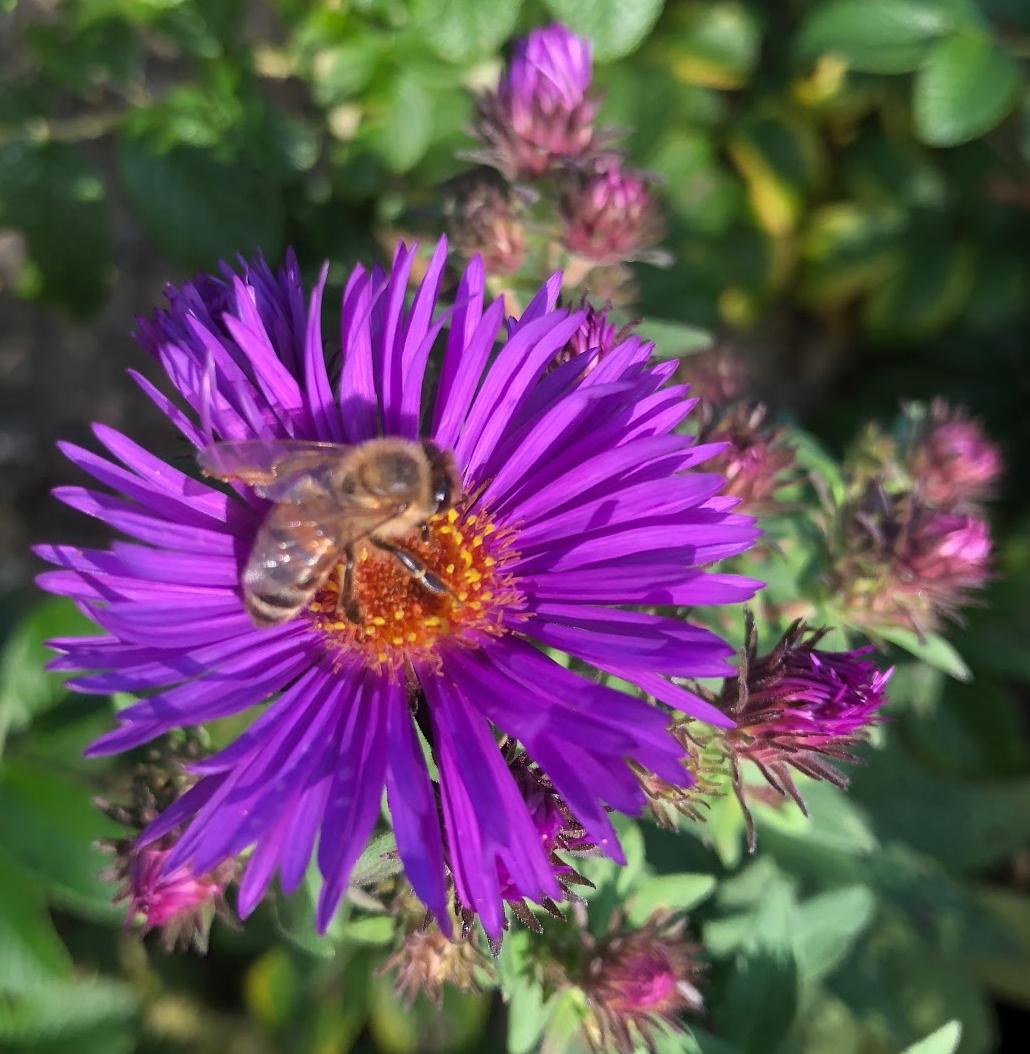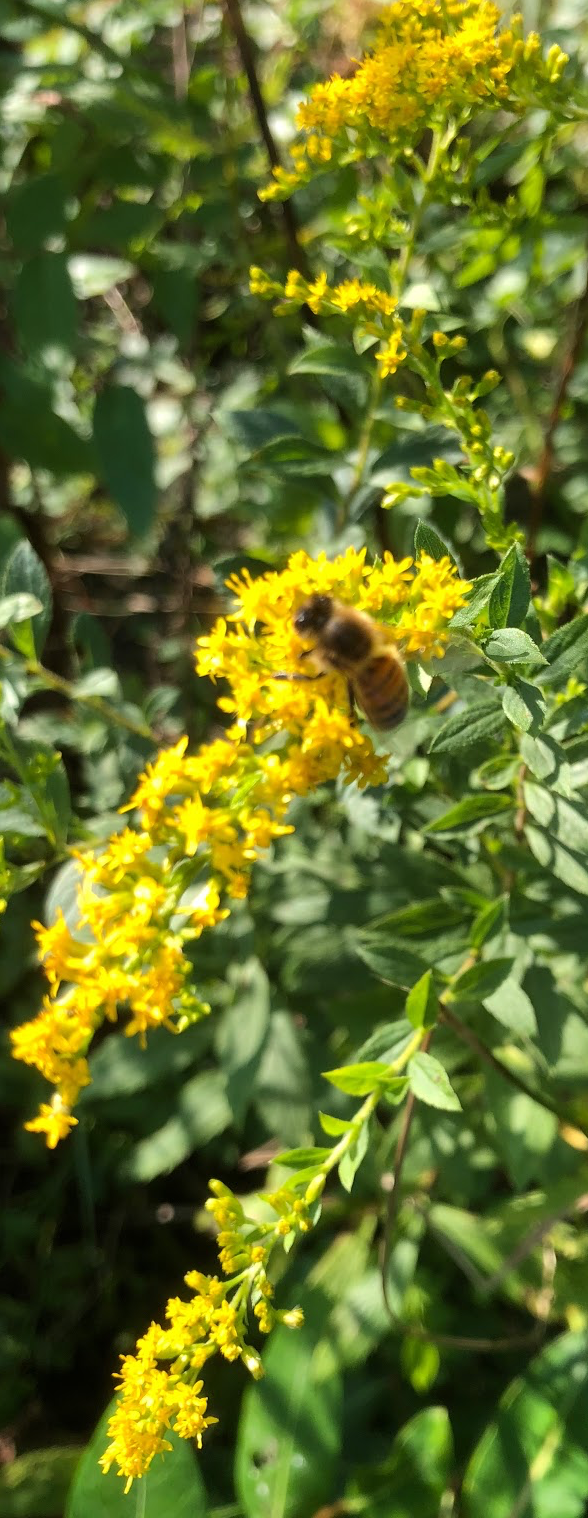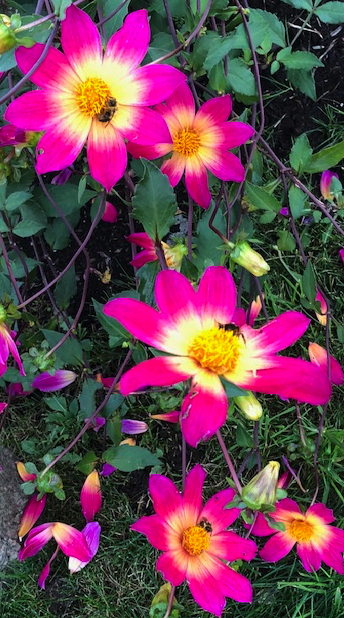
Pollinators have been in the news a lot recently, often in articles that describe challenges faced by honeybees and monarch butterflies. In addition to honeybees and monarchs, our Massachusetts pollinators include many other species of bees and butterflies, plus moths, beetles, and hummingbirds.
By visiting flowers in search of food, these beneficial animals spread the fertilizing pollen that causes fruit, nuts, and seeds to form. Which means that if a plant doesn't get a visit from a pollinator when it is blooming, it can't produce the food that we harvest, or the seeds that we need to plant again next year.
When we help pollinators thrive by giving them a healthy environment to live in, we don't just help them, we help ourselves.
So what can I do?
Sometimes it feels like a problem is just too big for one person, or one family, to be able to make any difference. Not so with helping out pollinators! Everyone, whether you live in a high-rise building or a big farm, can make changes that will help pollinators thrive.
Here are three ways that all of us can make changes to help pollinators with some specific suggestions to get you started.
1. Provide food
Pollinators need nectar from flowers, and who couldn't use a few more flowers in their life?

- City dwellers can usually find a spot for a window box, hanging plant, or balcony container garden. Fresh herbs like basil and chives, and edible flowers like nasturtiums, give you fresh flavors for your kitchen as well as irresistible nectar for pollinators. A project that can benefit an entire neighborhood is to work with your city or town to plant street trees, which provide nesting habitat for birds and food for caterpillars and pollinators. Oaks (Quercus species) are particularly good hosts, while silver linden blossoms (Tilia tomentosa) are a honeybee favorite.
- If you live in the suburbs, consider flowering shrubs as foundation plantings or along property lines, lining your walkway with a bed of fragrant bloomers like roses or lavender, making a tree or pond the focal point of your yard, and letting small flowering plants like white clover bloom in your lawn. Some shrubs to consider are Clethra alnifolia (summersweet), hummingbird favorite Hibiscus syriacus (Rose of Sharon), and Hydrangea paniculata (the kind that has the cone-shaped flowers).
- People living in rural areas could do any, or all, of the above. And perhaps you could host a flowering meadow, a fruit orchard, a lily pond, or gardens of vegetables and herbs on a corner of your land.
There are many resources online to help you plan a pollinator friendly garden and choose native Massachusetts plants that you know can survive our crazy winters.
2. Provide water
Like all other living things, pollinators need water.
Summer days are a perfect time to get the kids involved and make an oasis for bees and butterflies: set up a shallow dish with a few pebbles or marbles to act as perches for thirsty little creatures. If you happen to have some corks from wine bottles, an alternative is to fill a bucket or tub with water and float a few corks in it. Then you just need to provide clean, fresh water on a regular basis.
Here's how another blogger got her kids interested in helping bees.
3. Lay off the chemicals
Sometimes what you don't do is just as important as what you do.
 Stop using neonicotinoids. This is a type of insecticide that is intended to kill pests, but it also kills beneficial insects. Be sure that you:
Stop using neonicotinoids. This is a type of insecticide that is intended to kill pests, but it also kills beneficial insects. Be sure that you:
- - Check the labels of products you use on your lawn and garden (and even in your home: pet flea collars can also contain this chemical).
- - Ask retailers of the plants, shrubs, and trees you buy whether they have pre-applied neonicotinoids.
- - Read the pending Massachusetts House and Senate bills to protect pollinators, one of the Massachusetts Sierra club's legislative priorities for 2019-2020. If your state rep or senator isn't listed as a petitioner yet, ask them to sign on (and if they are, thank them)!
Ease up on the broad leaf weed killer if you have a lawn. You'll save your money and your time, and let those tiny flowers bloom. Setting your mower blades to a height of 3 to 3.5 inches, and mowing every 10-14 days instead of every week, makes for healthy grass while leaving small plants intact to provide food for pollinators.
How will you begin?
I hope you found at least one idea that you can use to make a positive change in your environment and help our essential pollinators thrive, and maybe more than one! You can find many more ideas on line by following the links in this post or enjoying your own research.
Alison Hodges
Amateur Gardener and Mass Sierra Club Volunteer